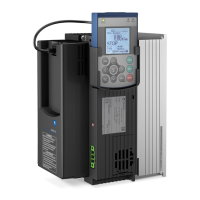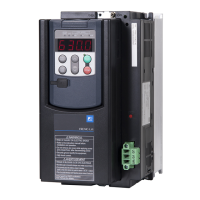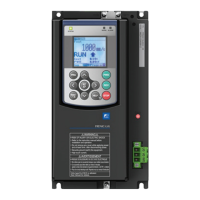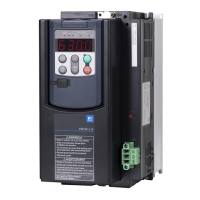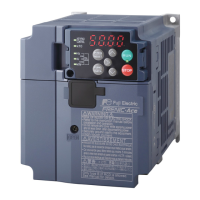7-1
Chapter 7 MAINTENANCE AND INSPECTION
Perform daily and periodic inspection to avoid trouble and keep reliable operation for a long time. Take care of the
following items during work.
• Before starting inspection, turn the power OFF. For the inverters with a capacity of 22 kW or below, wait at
least 5 minutes; for those with a capacity of 30 kW or above, wait at least 10 minutes. Further, check that the
charge lamp is unlit and make sure that the DC link bus voltage between the terminals P (+) and N (-) has
dropped below the safe voltage level (25 VDC) using a multimeter or a similar instrument.
Electric shock may occur.
• Maintenance, inspection, and parts-replacement should be made only by authorized persons.
• Take off the wristwatch, rings and other metallic matter before starting work.
• Use insulated tools.
• Never modify the inverter.
Electric shock or injuries could occur.
7.1 Daily Inspection
Visually inspect errors in the state of operation from the outside without removing the covers while the inverter
operates or while it is turned ON.
- Check if the expected performance (satisfying the standard specification) is obtained.
- Check if the surrounding environment satisfies Chapter 2, Section 2.1 "Operating Environment."
- Check for abnormal noise, odor, or excessive vibration.
- Check for traces of overheating, discoloration and other defects.
7.2 Periodic Inspection
Perform periodic inspection by following the items of the list of periodic inspection in Table 7.1. Before performing
periodic inspection, be sure to stop the motor, turn OFF the inverter, and shut down power supply. Then remove
the covers of the control and main circuit terminal blocks.
Table 7.1 List of Periodic Inspections
Check part Check item How to inspect Evaluation criteria
Environment
1) Check the ambient temperature,
humidity, vibration and atmosphere
(dust, gas, oil mist, or water drops).
2) Check if tools or other foreign matter
or dangerous objects are left around
the equipment.
1) Check visually or
measure using
apparatus.
2) Visual inspection
1) The standard
specification must be
satisfied.
2) No foreign or
dangerous objects
are left.
Voltage
Check if the voltages of the main and
control circuit are correct.
Measure the voltages
using a multimeter or
the like.
The standard
specification must be
satisfied.
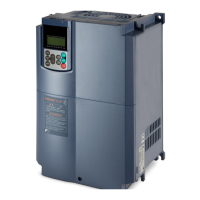
